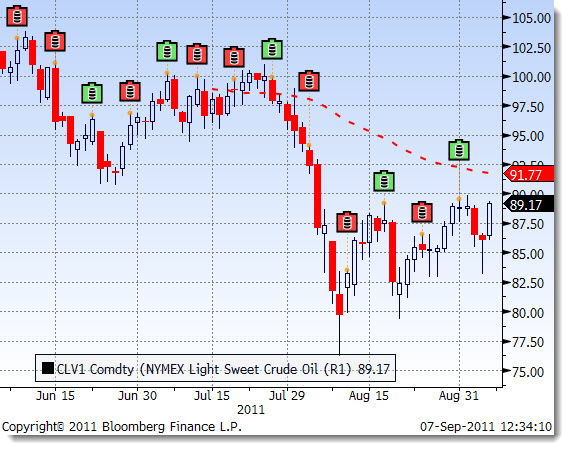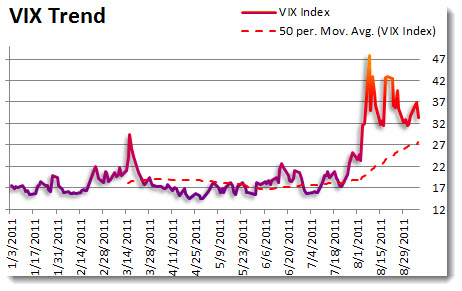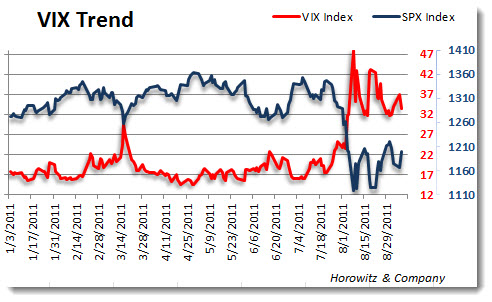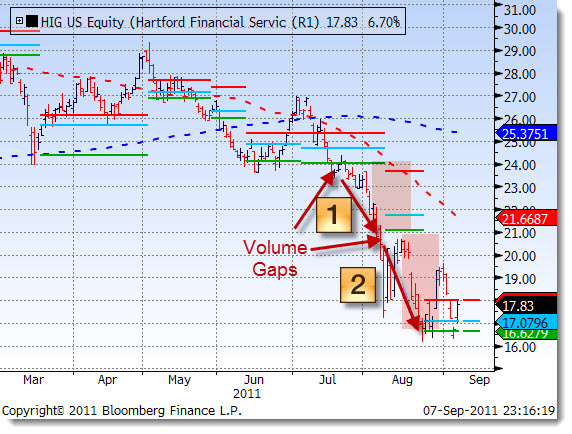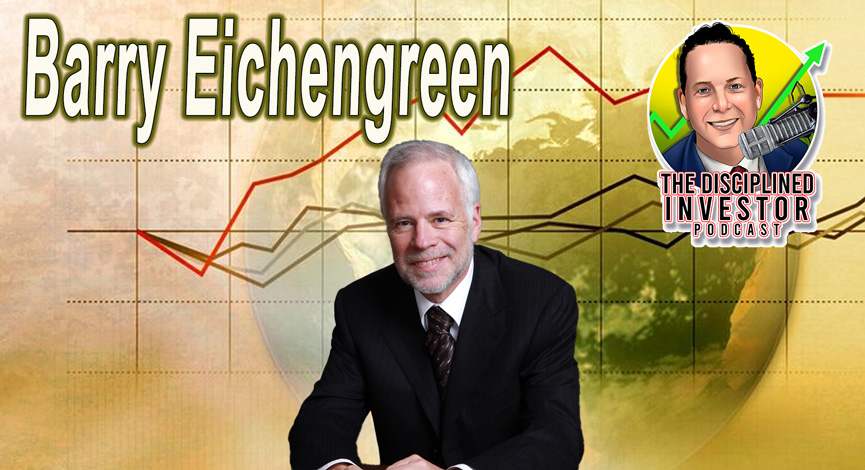During the month of September, we are going to be adding a special section to this site.
The TDI Managed Growth Strategy provides a private “client-only” blog where we discuss the day and our general outlook. Areas that we cover range from current holdings analysis, economic reports, political commentary and more.
The primary purpose of the “client-only” blog is provide information so that clients for whom we manage money will have a better understanding of what is the rationale for portfolio decisions. In addition, the information is designed to be educational so that readers can learn from both our mistakes and successes.
On a daily basis, simply follow www.thedisciplinedinvestor.com or use an RSS reader and point it to : http://tinyurl.com/3u3jahy or http://www.thedisciplinedinvestor.com/blog/category/stocks/insideedition/feed/
If the global equity market were to seek a diagnosis for their recent behavior, a doctor may believe that there is a  dissociative identity disorder (or multiple personality disorder) involved. One day investors are running scared and selling everything and another they are doing the exact opposite. On Wednesday, there was some excitement over stocks.
dissociative identity disorder (or multiple personality disorder) involved. One day investors are running scared and selling everything and another they are doing the exact opposite. On Wednesday, there was some excitement over stocks.
The reasons are not clear cut but there were a few drivers that could be seen. Asia rallied overnight and Germany got the all-clear signal from the courts to throw more money into the garbage as they look to bailout the PIIGS nations. With that last bit of news, the best performing markets were the ones with the most significant financial concerns. And why not? They are happy to get a free-ride off of the backs of the German and French taxpayers for a little while longer.
Here is how the stock markets across Europe performed today:
- UK’s FTSE: + 3.1%
- Germany’s DAX: + 4.0%
- France’s CAC: + 3.6%
- Spain’s IBEX: + 2.7%
- Portugal’s PSI: + 2.2%
- Italy’s MIB Index: + 4.2%
- Irish Ovrl Index: + 2.8%
- Greece FTSE/ASE 20: + 10.0%
Once again there is a brief reprieve from what appears to be an inevitable default by one or several of the above. Investors cannot help themselves in seeking out a quick fortune by buying the sovereign debt and near death banks as they believe they will rise from the ruins. Up until now, each time a bounce like this occurs, reality sets in and slaps them in the face within days.
Will this time be different? Perhaps, but unless there is a resolution to the situation soon (by default or permanent bailout) we will see the same cycle played out over and over again for the foreseeable future. The only difference will be that the time between the waves will become more frequent and more volatile.
Other than the European drama, there was little news that provided for the strength seen in U.S. markets. While the USD was lower for most of the day, it tried to climb back just before the close of the European markets. From there it was all downhill again for the greenback.
WTI Crude Oil shot up 3%, past the $89 level as the API report was expected to show that inventories were drawn down more than anticipated (and it did). The report that we will be looking to for a better view is the DOE report, scheduled for release on Thursday, September 8, 2011 at 11:00 A.M. (This week’s holiday pushed it back one day)
The chart below shows the recent price trend of Crude Oil along with the release dates – color codes show a greater than expected draw down (red) or a build greater than expected (green).
Into the close, key levels were hit for a few securities that we have alerted. The Russell 2000 is now breaking out above the important 705 level. In addition, Silver has just been rebuffed off of its top end resistance for the second time in a week.
The parade of FED speakers will be talking their talk over the next few weeks. Thursday we will have some comments from Ben Bernanke. We complied a list of speakers that may be making appearances in the near future and their general attitude toward interest rates and inflation. This helps to better understand market reaction from their commentary.
As an example, on Wednesday, Charles Evans was talking about a much greater amount of stimulus from the FED and targeting an inflation rate higher than is currently in place. Obviously that is a very dovish commentary and it helps to know that Mr. Evans is often seen as a dove in his remarks.
Hawkish:
Richard Fisher
James Bullard (Non-Voting)
Charles Plosser
Thomas Hoenig (Non-Voting)
Dennis Lockhart (Non-Voting)
Dovish:
Ben Bernanke
William Dudley
Charles Evans
Narayana Kocherlakota
Daniel Tarullo
Janet Yellen
Eric Rosengren (Non-Voting)
Unclear:
Sarah Raskin
Elizabeth Duke
One of the reasons that we have been holding a significant amount of cash has been the heightened level of the VIX. Sure, equities can move higher when the VIX is elevated, but above 30 is a time that expectations are that volatility will be much greater than usual. When that occurs, it is very possible for investors to become less loyal to their positions and sell with a quick finger. Currently, the VIX is well above its 50-day moving average, another negative indicator.
The trend of the VIX is also troubling. The 50-Day moving average is sloping higher and that is not a welcome sign for equity buying. Again, markets may move higher during periods that this sentiment indicator is elevated, but more often than not, it is a sign of a disorderly market condition.
Notice on the chart above that the VIX and the S&P 500 index look like mirror images. When the S&P moves down, the VIX will move higher. The “fear” created by a market moving lower tends to push investors/money managers to buy portfolio protection. Often times an option on the VIX (call for protection) is bought as it will usually move inversely to stocks. The increase in the price of the VIX is simply caused by the supply/demand for the protection as markets are trending lower.
___
Looking to invest in The Disciplined Investor Managed Growth Strategy?
Click HERE for the virtual tour….
___
From our perspective, there is still a wide range of overriding economic and political time-bombs that are ticking. Each one of them has the power to destroy even the most fundamentally sound stock. Due to these conditions, we are only investing in a handful of positions that have the highest fundamental technical scores. The disciplines we established for these types of conditions will only allow for stocks that meet a certain threshold for each scoring process to be bought. Even with this high level of scrutiny, these are also very susceptible to draw-downs when there is selling pressure.
Right now, there are over 50 stocks that meet the core screening criteria that we have established based on our Quantitative Screening process. Within that set, there are less than 10% that have technical scores high enough that we would consider investing in until we see a market signal that provides for a baseline of support.
The level that we are looking for is calculated based on a custom price-weighted model of the major U.S. stock indices. As of today, we need to move approximately 3% higher in order to get to the base level of support. Once the index stabilizes above that, we believe that conditions are more favorable to add additional positions.
While it was nice to see markets move impressively higher throughout the day. TDIMG portfolios were slightly down. Between the hedges that we have on and the underperformed of the stocks held, there was little benefit offered by the quick run-up. Fortunately, into the close of the session on Tuesday, the short positions on Emerging Markets and Financials were sold for a nice profit. But, we still held a 10% position in short against the European equity market that also was lower due to the move up of the Euro against the U.S. Dollar.
In addition, we had put on a short trade against the financials mid-day that moved against us and was sold at the predetermined level. The reason for the initiation of this particular trade was the daily patterns that we have been observing. On a regular basis what we are noticing is that light volume moves to the upside have often been greeted with selling pressure toward the end of the day. Also, as the financials (tracked by the ETF XLF) moved into resistance zones, there has been pauses that become sell zones. Last week a similar condition worked out well. The bottom line is that outcomes when there is high volatility are less predictable.
There were two particular “trades” that are worth a few comments that were initiated today. First, is the short position in Hartford Financial (HIG). This is a company that we see as very vulnerable to the European crisis and has a defined range that has formed. The range can be marked in a few ways, but we are looking at this from the perspective of where the greatest level of volume has been seen along points of selling.
There are two “volume gaps” that are highlighted on the HIG daily chart. Both are stopped and had a significant volume pickup at the levels that have the green horizontal lines. Those may be points in the chart’s history that were previous peaks or support levels that provided a point for investors to step in.
Each set of three colored lines (red, cyan and green) represent points where there was a high level of volume during a consolidation (red, green) and a point in between with the highest volume density within the range. The most recent range shows that today’s high was stopped almost exactly on the high point of the range that coincided with a high volume density area. In other words, this is where investors climbed aboard the long side as the stock was dropping.
Many of these investors may now be looking for an exit close to their original entry as they have been whipsawed. They serve as a point of resistance and we know that there is a good number of shares traded at that level. Either one of two things is going to happen here.
1. The stock will breach the resistance as more buyers step in with the thought that the stock will be heading higher. That will move the price into the “volume gap” area that will create a short squeeze and drive the price quickly higher.
2. Sellers will step in as they have a few times before within this range and the stock will once again fall toward the green support line. From there, either buyers will step in looking for a bounce, or there will be a swift move down to about the $13 area as there is another “volume gap” below.
For each of the above possibilities, we have set price targets and will follow them as the setup described above is our guide.
Stay tuned for the BIG Presidential speech tonight that promises to have a good deal of promises. Already estimates have increased from an initial $200 billion stimulus package to where it is now estimated to be closer to $400 billion. An approval of this package by congress will only be through divine intervention. Remember, it was only a few weeks ago that there was a blowout fight related to deficit cutting in order to bring debt under control. How will a $200-$400 billion stimulus plan (which very much resembles the last failed initiative) get approved is anyone’s guess. Crazier things have happened though…
___
Latest Podcast Episode: TDI Podcast 228: Curzio Brings Clarity To The Confusion (#228)
Guest(s): Frank Curzio
___


